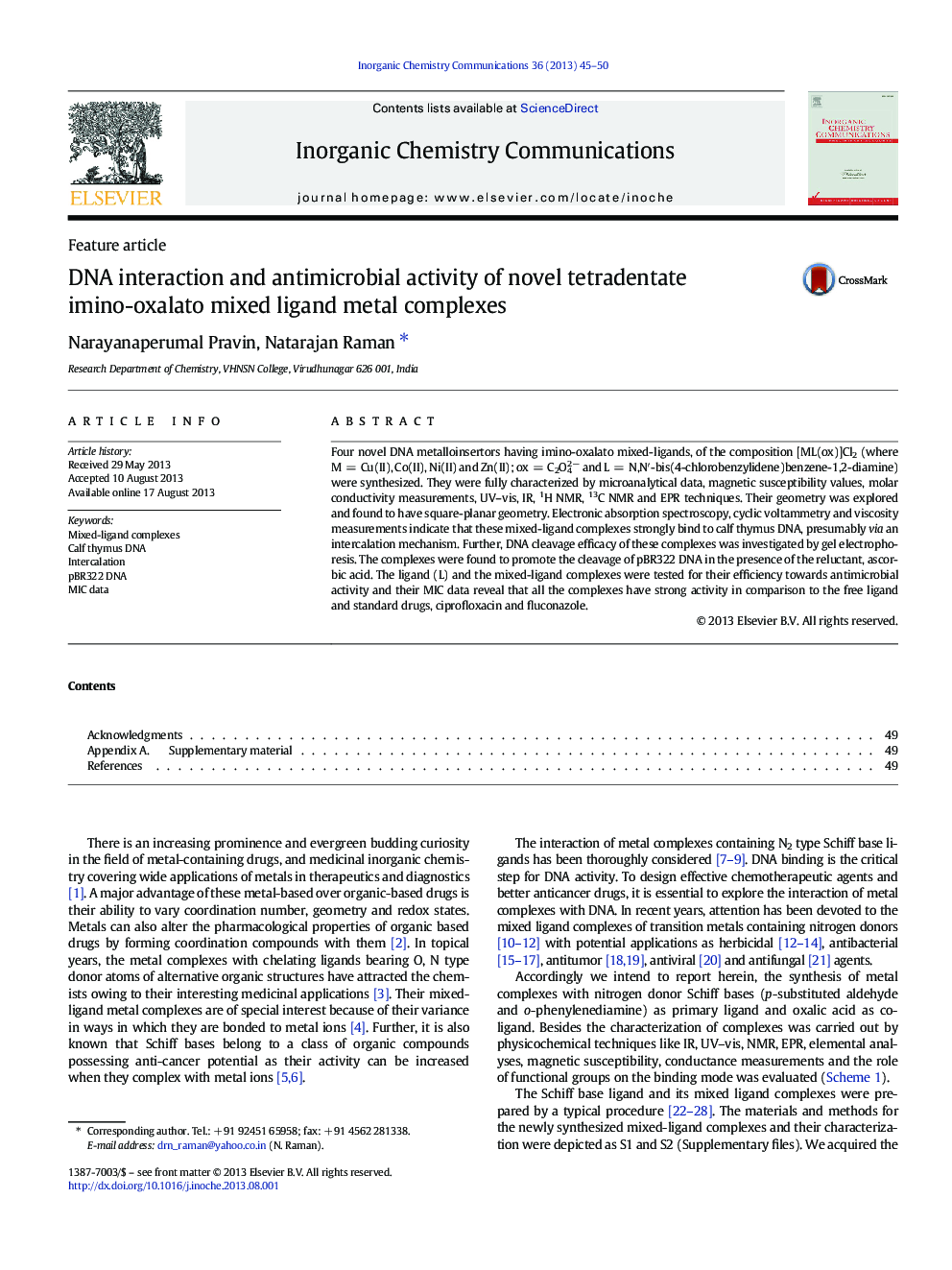| Article ID | Journal | Published Year | Pages | File Type |
|---|---|---|---|---|
| 1301892 | Inorganic Chemistry Communications | 2013 | 6 Pages |
•Synthesis of N2O2 mixed-ligand metallonucleases•Synthesis of good intercalators and anti-microbial agents•Exhibit efficient cleavage potential for pBR322 DNA•To develop the novel DNA targeting metallodrugs
Four novel DNA metalloinsertors having imino-oxalato mixed-ligands, of the composition [ML(ox)]Cl2 (where M = Cu(II), Co(II), Ni(II) and Zn(II); ox = C2O42 − and L = N,N′-bis(4-chlorobenzylidene)benzene-1,2-diamine) were synthesized. They were fully characterized by microanalytical data, magnetic susceptibility values, molar conductivity measurements, UV–vis, IR, 1H NMR, 13C NMR and EPR techniques. Their geometry was explored and found to have square-planar geometry. Electronic absorption spectroscopy, cyclic voltammetry and viscosity measurements indicate that these mixed-ligand complexes strongly bind to calf thymus DNA, presumably via an intercalation mechanism. Further, DNA cleavage efficacy of these complexes was investigated by gel electrophoresis. The complexes were found to promote the cleavage of pBR322 DNA in the presence of the reluctant, ascorbic acid. The ligand (L) and the mixed-ligand complexes were tested for their efficiency towards antimicrobial activity and their MIC data reveal that all the complexes have strong activity in comparison to the free ligand and standard drugs, ciprofloxacin and fluconazole.
Graphical abstractThe synthesized efficient intercalating mixed ligand metal complexes are valuable in designing novel agents for targeting nucleic acids as well as setting the stage for the synthesis of metal nuclease drugs.Figure optionsDownload full-size imageDownload as PowerPoint slide
